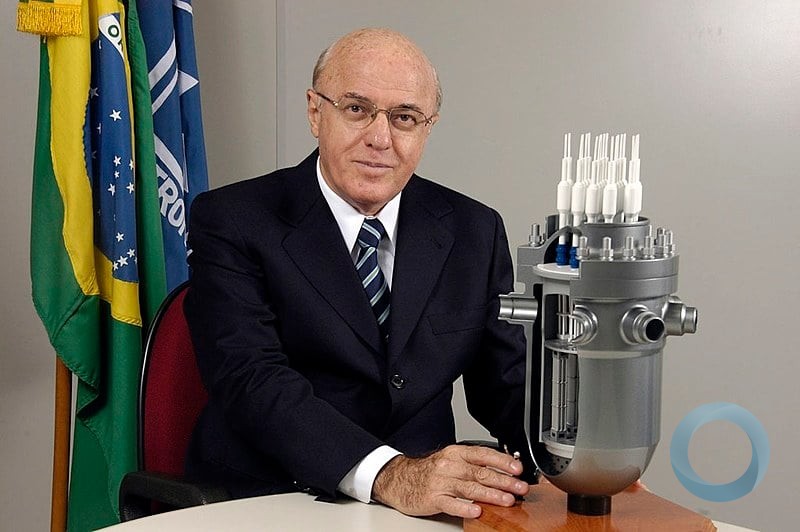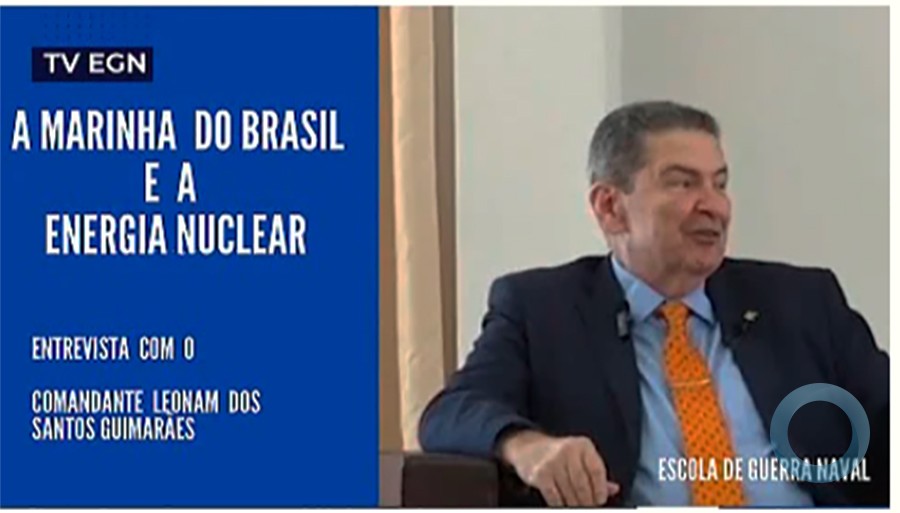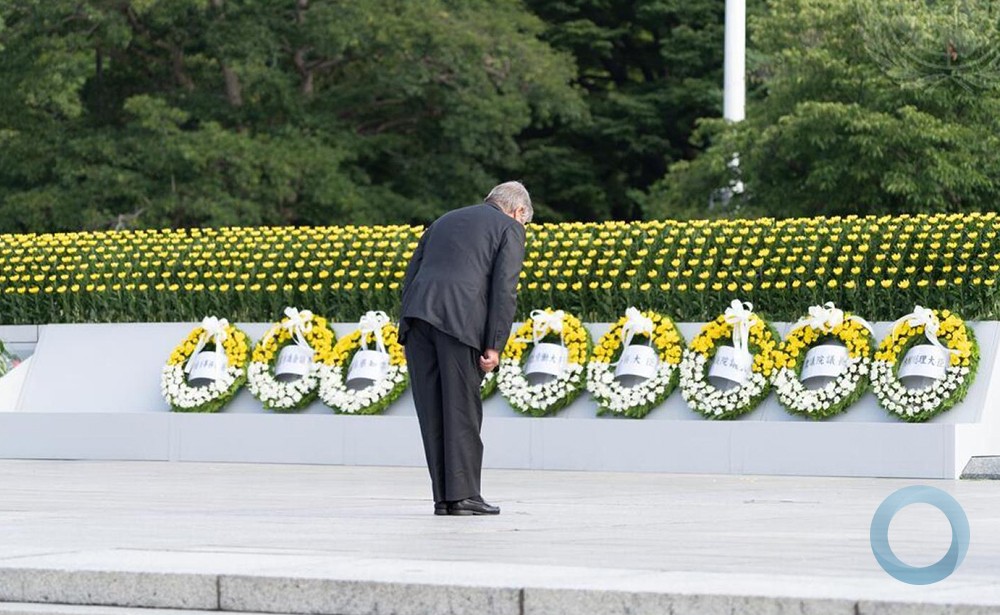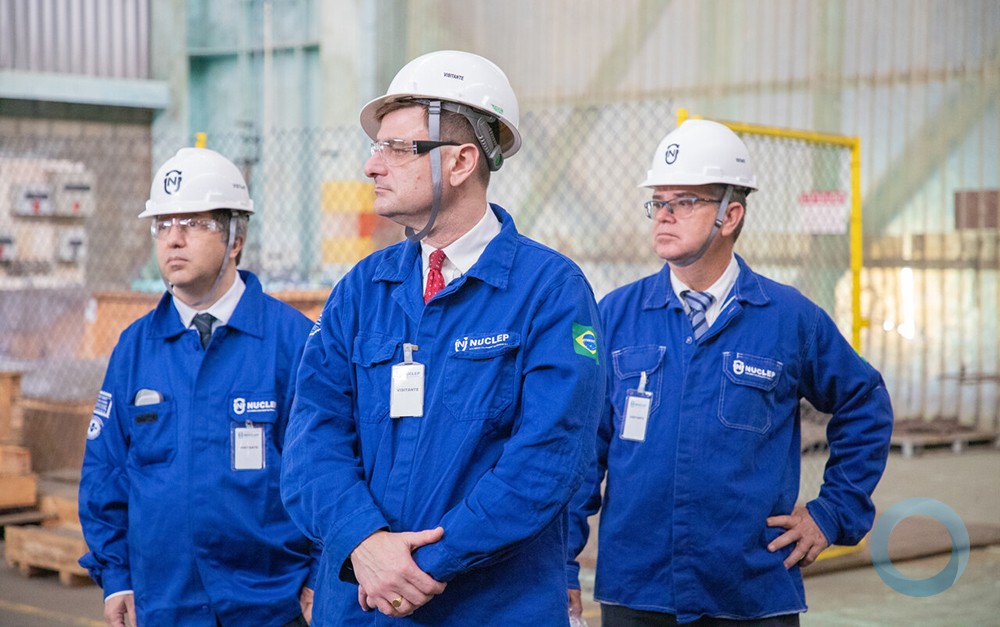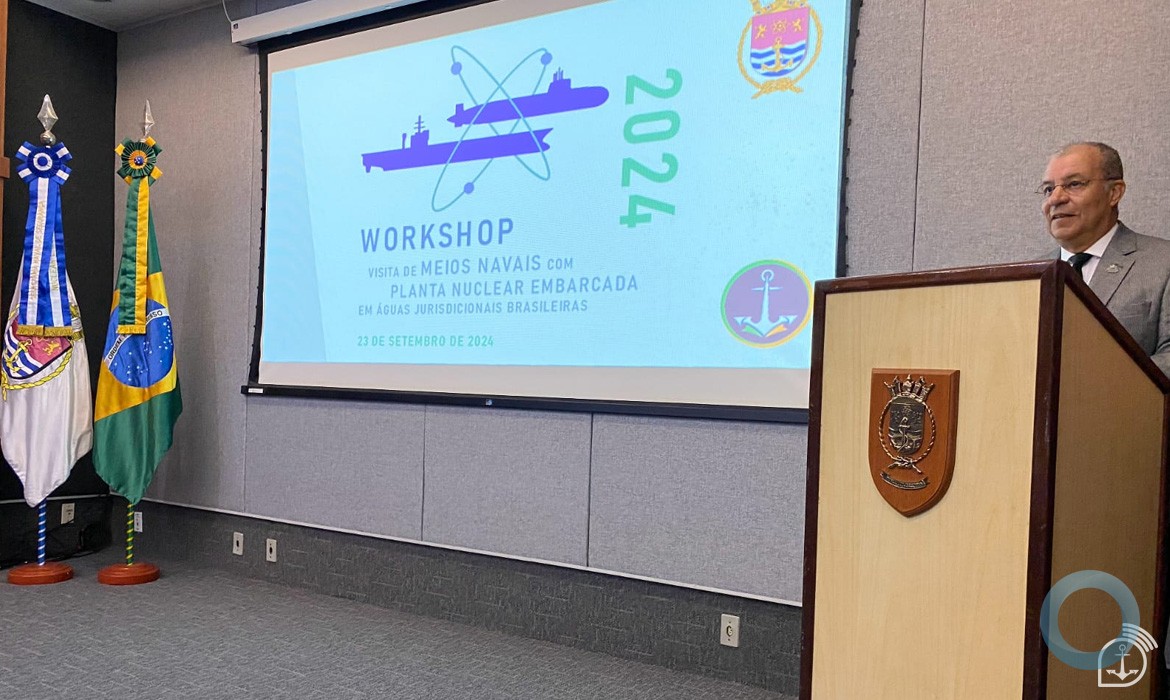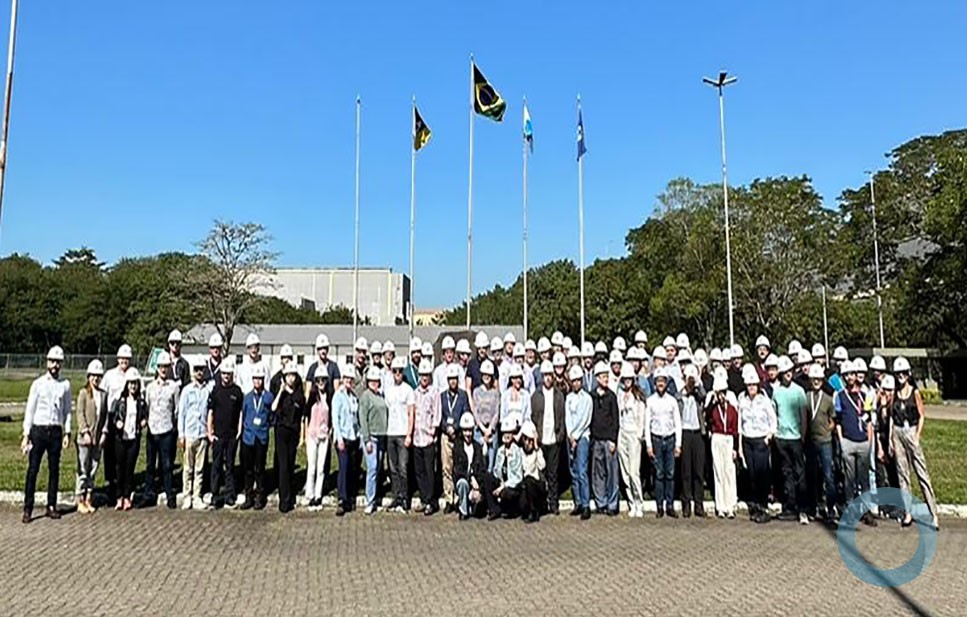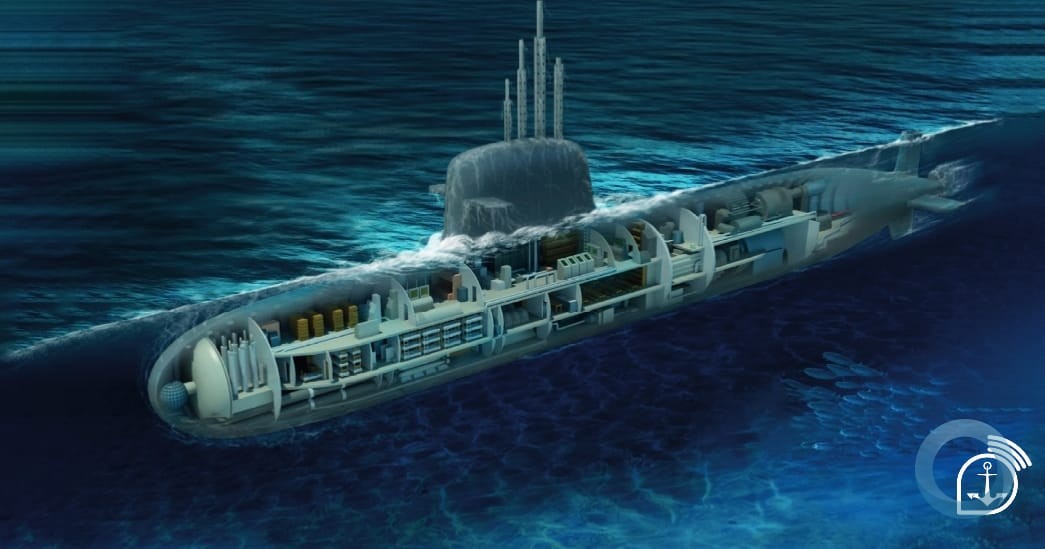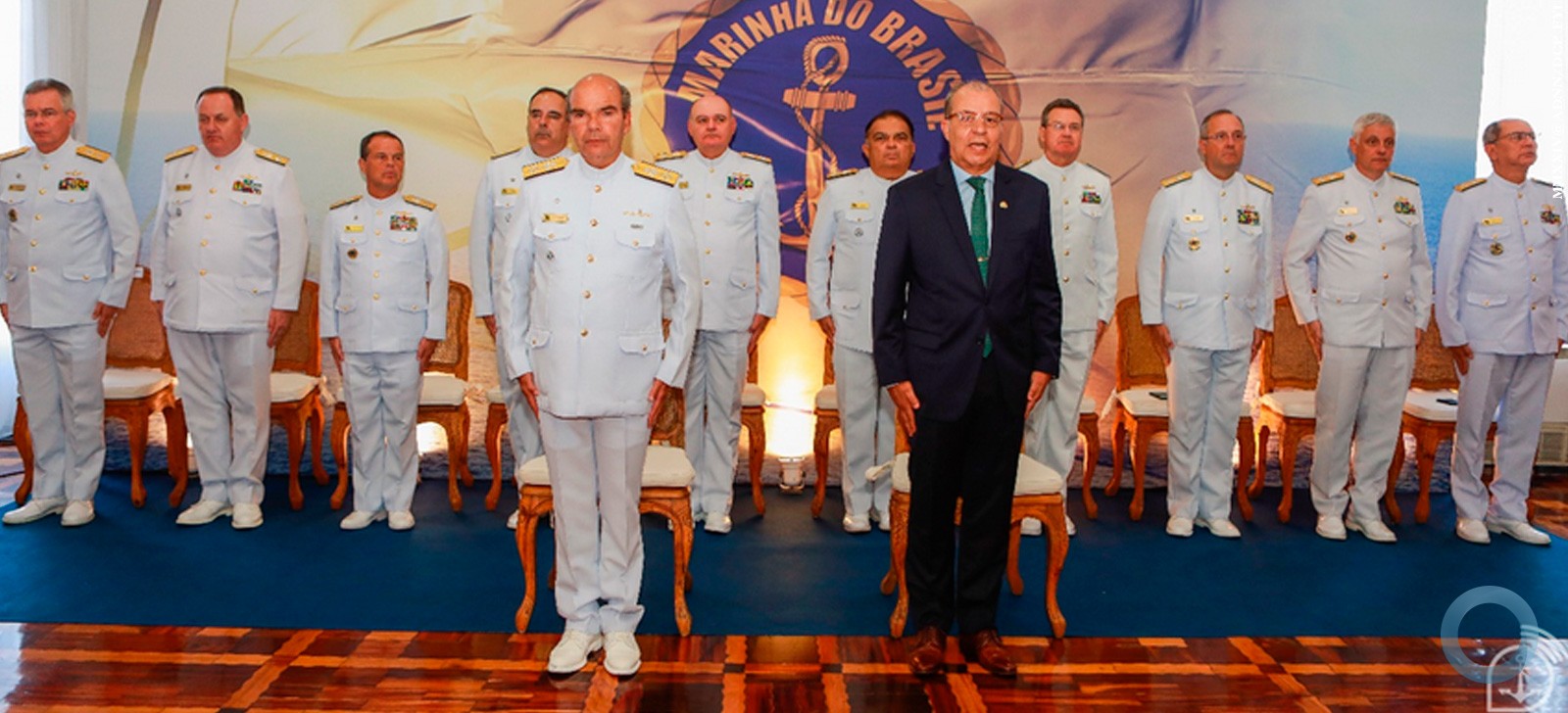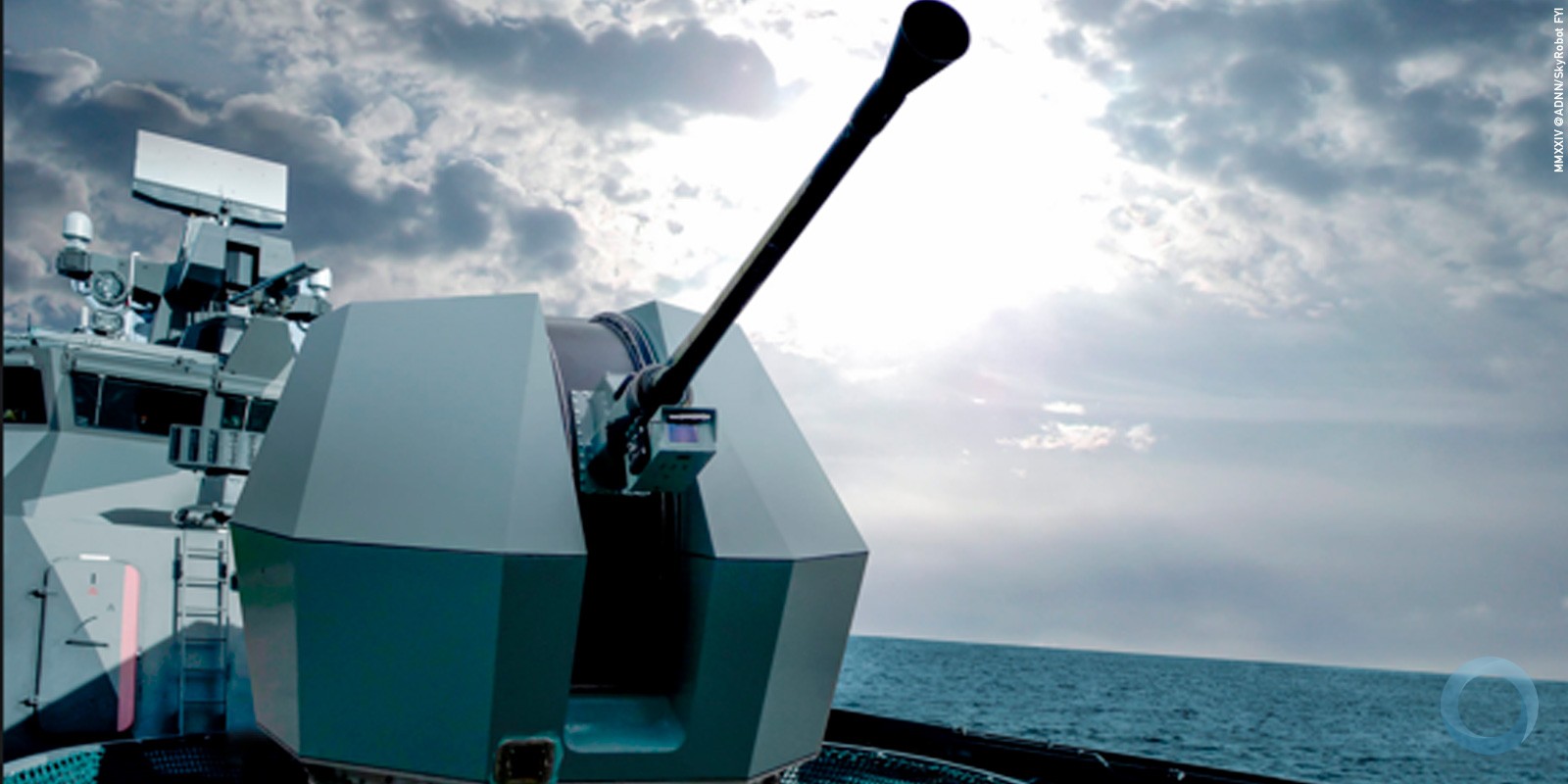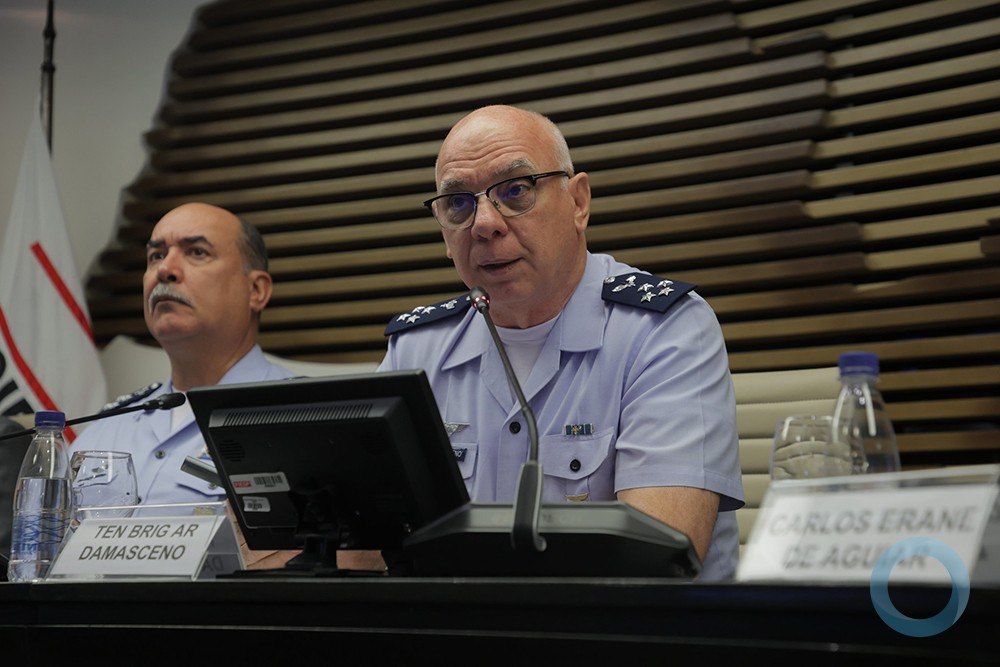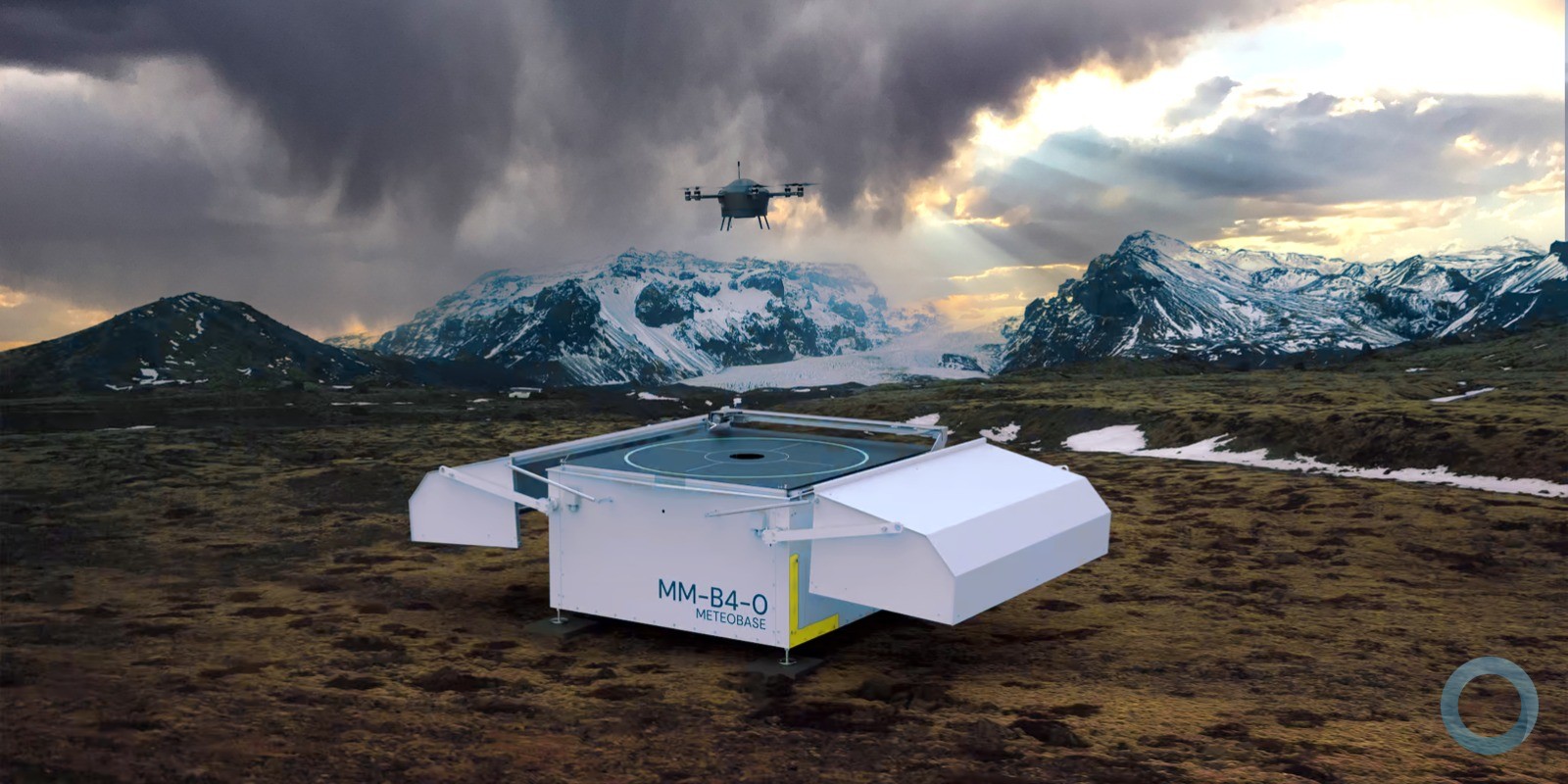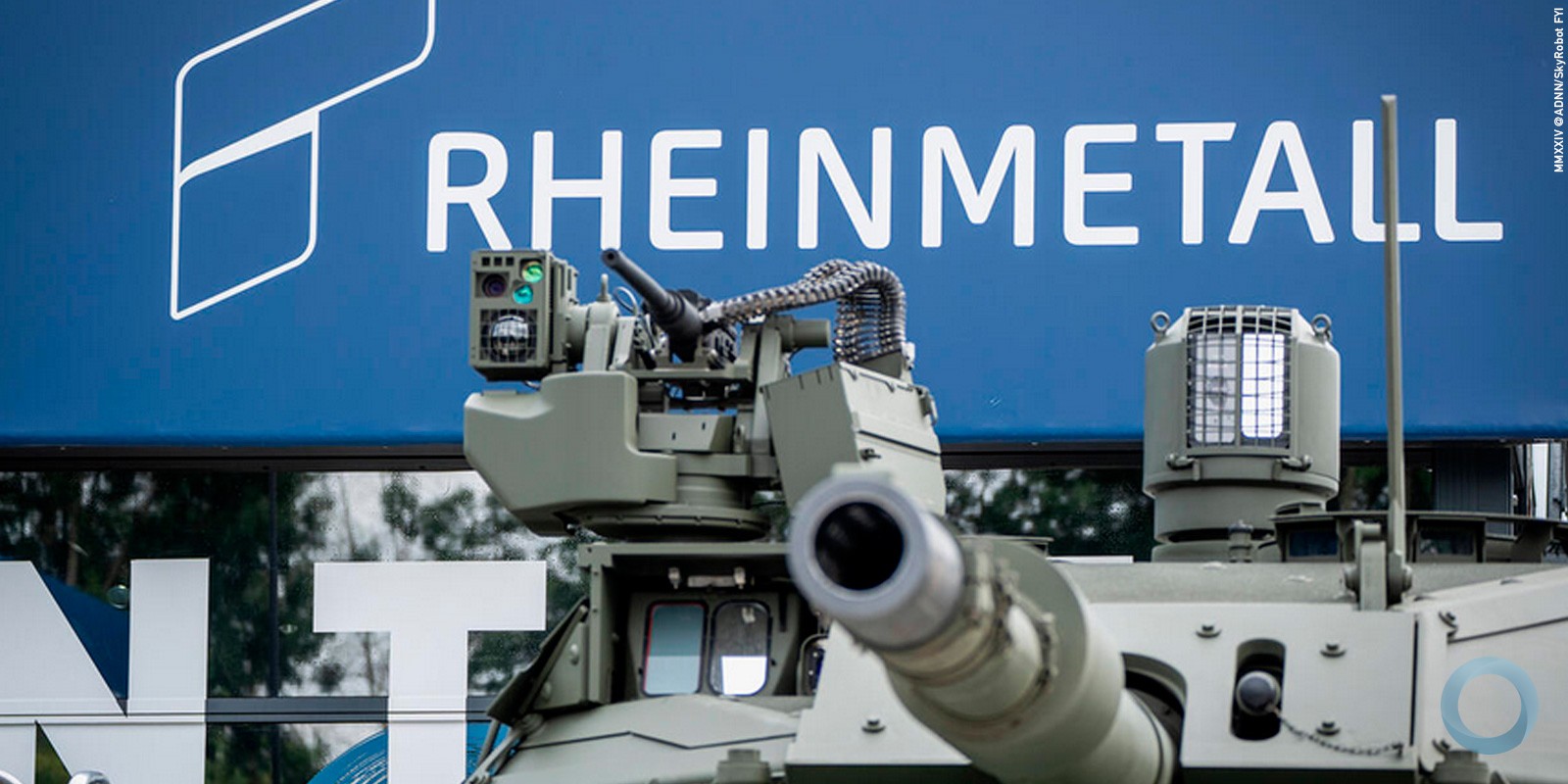|
Note DefesaNet For Portuguese version see: SSN em Marinhas do terceiro mundo: um problema de proliferação nuclear? The Editor |
U.S NAVAL INSTITUTE
INTERNATIONAL NAVIES ESSAY CONTEST
1999
Second Honorable Mention
TITLE: SSN IN THIRD WORLD NAVIES: A nuclear proliferation issue?
AUTHOR: Leonam dos Santos Guimarães
Commander (Naval Engineer), Brazilian Navy
Centro Tecnológico da Marinha em São Paulo (CTMSP)
Av. Prof. Lineu Prestes 2242, Cidade Universitária
São Paulo – SP – BRASIL – 05508-900
+55-11-817-7148 Fax: +55-11-814-4695
e-mail: 132@ctmsp.mar.mil.br/ leosg@uol.com.br
The author is a Brazilian Navy Engineering officer. His undergraduate studies were in Naval Architecture and Marine Engineering at University of São Paulo. He has a PhD in Ocean Engineering by University of São Paulo and a MSc. in Nuclear Engineering by French Institut National des Sciences et Techniques Nucléaires. His naval career includes EEZ patrol and SAR sea duty, and engineering design and project management activities at the Naval Technological Center in São Paulo.
SSN [1] acquisition by NPT [2] – NNWS [3] Navies does not imply nuclear weapon proliferation risks higher than those related to stationary research and power reactors. It must then be recognized that stringent restraints on supplies and political pressures on governments, both exercised very effectively by NPT-NWS [4] against NPT-NNWS indigenous development of SSN and associated fuel cycle facilities, are fundamentally based on geopolitical and military strategic objectives. This practice is far from being related exclusively to the NPT spirit: in fact, it is a matter of freedom at seas and not of nuclear proliferation.
Background
The potential cause-effect relation between SSN development and nuclear weapons production by de jure NPT-NNWS is a subject that has been scarcely discussed by unclassified sources. The general issue can be stated as follows:
Given their cost, environmental impact and possible connection to the proliferation of nuclear weapons, are SSNs the most appropriate naval technology for facing realistic threats to the national security of a particular NNWS?
When stated this way, the debate on the wisdom of SSN acquisition is strongly reminiscent from the long-standing controversy about the desirability of using nuclear power as an energy source in both developed and developing countries, particularly NNWS.
The discussion on the connection between the nuclear power and the spread of nuclear weapons was particularly spirited during the Carter government in the USA. This concern was stemmed from the Indian “peaceful bomb” explosion, in 1974, and from the perception that nuclear power industry would expand rapidly after the 1973 oil crisis. Although all de jure NPT-NWS [5] have produced their own explosive materials at facilities dedicated to that purpose, the perceived lesson from the Indian test was the establishment of a civilian nuclear power program could provide a convenient rationale for the acquisition of SFM [6] and related technologies, that were also relevant to the production of nuclear weapons.
Particularly worrisome in this regard were HEU [7] and Plutonium. HEU is produced from natural Uranium or LEU [8] by enrichment processes [9]. Plutonium is produced from similar materials, but previously irradiating them as fuel or blankets in nuclear reactors [10], and then by reprocessing processes. The prevailing view regarding these “sensitive” technologies has been their mere possession “elevates” a NNWS to a de facto NWS status [11]. The possibility that a nuclear device might rapidly be made leads prudent adversaries to act as if the weapon had already been made. To avoid this possibility, an international safeguard regime was established by NPT agreements and currently enforced by IAEA [12].
Reactors, enrichment, reprocessing and other nuclear facilities in NNWS [13] are internationally safeguarded, in order to detect and deter the production or diversion of weapon grade SFM [14]. However, NWS non proliferation establishments have more often than not regarded this regime with skepticism. They do not have full confidence that safeguards could detect such actions in a timely manner, i.e. before their effective use in nuclear weapons [15]. Even so, the “time to production” is the basis of the safeguard system, whose enforcement measures should be as strict as this time is supposed shorter. Nevertheless, from a technical point of view, SFM acquisition only constitutes a first step to whom are procuring an explosive device [16]: the further steps are also submitted to other international safeguard regimes [17].
Today, one can verify that the fears about the spread of nuclear power, potentially leading to a “horizontal” nuclear weapon proliferation [18], have not been materialized. Mainly due to concerns about reactor safety, slow economic growth and high costs of the required infrastructure and reactor construction, nuclear power industry has hardly diffused beyond those states where it had already been implemented by the 1970’s. The focus of proliferation concerns has been on the efforts of some countries [19] to develop a nuclear weapon capability through unsafeguarded dedicated facilities [20]. Meanwhile, the nuclear power industry [21] establishments and their critics have been involved by the consequences of TMI and Chernobyl accidents [22] and by the optimistic prospects offered by growing international awareness about the potential seriousness of greenhouse warming impacts [23].
Meanwhile, supposed – or publicly assumed – plans of several NNWS to acquire SSNs [24] have added a new heat to the proliferation debate. Historically, the development of nuclear reactors for naval propulsion in NWS preceded their use as power sources for civilian applications.For instance, the commercial PWR is a direct descendant of submarine reactors developed for US Navy [25] in the early 1950s. In contrast, NWS nuclear propulsion of naval vessels was developed later than nuclear weapons acquisition.
A Peaceful Application of Nuclear Energy?
There was a difference between IAEA and NPT safeguard approaches: the first considered that nuclear energy should not be used for “not-well-defined” military purposes, while the second impose that nuclear energy should not be used for “well-defined” explosive warfare purposes. This fact leaded to some ambiguous interpretations in the past, that are currently clarified.
According to IAEA statute[26], the agency shall insure, so far as it is able, that assistance provided by it, or at its request or under its supervision or control, is not used in such a way as to further any military purpose. This provision implies, for instance, that safeguards would be designed to ensure that enriched Uranium supplied for use in a civilian power reactor would not be used in nuclear weapons or in non-explosive military applications, such as naval propulsion or military satellites. This is the basic undertaking of older IAEA safeguard agreements[27], which prohibits the use of safeguarded materials and facilities in such way as to prevent any further “military purpose” use.
Nevertheless, NPT agreements prohibit the diversion of nuclear material from “peaceful activities” to “weapons or other explosive devices”, but do not include any prohibition to “non explosive military applications”. These agreements includes provisions that allows a State to withdraw nuclear material from general safeguards while it is being used for a “non-proscribed military activity”, such as fuel for a submarine propulsion reactor. As with NPT text itself [28], which guarantees full access to peaceful nuclear technology to all NNWS parties, this provisions were inserted at the behest of several NNWS that were unwilling to forego any of the perceived benefits of nuclear energy beyond nuclear weapons and nuclear explosive devices, specifically including nuclear-powered naval vessels.
To harmonize these originally different approaches and differently from the former ones, the actual IAEA safeguard agreements [29] incorporate the NPT principle, including provisions to withdraw from general safeguards [30] materials to be used in “non-proscribed military activities”, as SSN propulsion.
The official opinion of the Secretariat of the IAEA, in response to an Argentinean representative on the Board of Governors request, resulting from the presence of British SSN in the South Atlantic [31], is extremely relevant. It was directly questioned the degree of compatibility among Treaty of Tlatelolco [32], the safeguards agreements in force, and the IAEA statute, referring to the legitimacy of non-explosive military applications of nuclear materials. The report [33] established that the differences among the various types of agreements do not convey any incompatibility [34]. Reasonably, it can be concluded that SSN propulsion is not incompatible with a nuclear program exclusively directed to peaceful ends, as the Brazilian one.
A “Deception” for Nuclear Weapons?
One could suppose that all technological capabilities to be acquired by a third world NNWS developing a SSN facilitate a further acquisition of nuclear weapons. Such kind of statement would be a very tendentious one, as these capabilities also facilitates social and economic growth. Obviously, the potential “spin-off” effects arising from a nuclear propulsion program fall well beyond the sole weapon applications.
There is no doubt that any development of nuclear fission applications enhances the potential capacity of a country to produce nuclear weapons. However, to make them is a political decision. If a country has the entire infrastructure required but no political will, the production of a nuclear weapon is clearly put aside. The political intention is what really counts, and not the sole technical capability. An example of strong political will against such a decision was given by Brazil, whose Constitution[35] unambiguously bans nuclear weapons from its national territory.
A NPT-NNWS that wishes to obtain enriched Uranium for submarine reactors could produce materials locally at safeguarded facilities and invoke the exemption provisions to withdraw a given amount of these material for non-proscribed military activities, as SSN propulsion fuel, without triggering safeguards agreements. Through the same rationale, it could even legally buy the required material from a NPT-NWS or NPT-NNWS[36]. Based on this lone fact, it could be supposed that some nuclear material in a NPT-NNWS would rest outside IAEA safeguards, but this conclusion is not right.
A NPT-NNWS possessing Uranium enrichment and fuel fabrication facilities to produce nuclear submarine fuel cannot claim such plants as not subjected to IAEA safeguards since they would be dedicated to a non-explosive military use. Such an interpretation violates NPT spirit, as there are no means to verify that nuclear facilities ostensibly being used in a non-proscribed military activity were not being misused to make nuclear weapons. The NPT-NNWS is only allowed to withdraw the material strictly necessary to SSN operation. Their fuel cycle facilities and remaining materials shall be kept safeguarded. The withdrawn material shall be submitted to specific safeguards provisions, defined by multilateral agreements among IAEA and interested parties. By some slightly different means, the continuity of safeguard enforcement should be assured.
For instance, this is the path followed by Brasil and Argentina. In 1991, these countries signed the so-called Bipartite Treaty to safeguard their indigenous nuclear facilities, creating an independent agency for nuclear material inventory control [37]. IAEA was then invited to fully participate in this particular safeguard regime, and the so-called Quadripartite Treaty [38] was signed in the same year, being currently enforced [39]. This treaty defines specific provisions for the use of materials produced by safeguarded facilities in nuclear propulsion [40]. In this case, their “special procedures” assure safeguard enforcement without disclosing technological and military classified information on SSN design and operation.
The proliferation of nuclear weapons is then an eminently political and non-technical subject. Both de jure and de facto NWS countries obtained SFM through programs specifically directed to that purpose. Consequently, they have followed the shortest and most economic way toward the objective pursued, which is not a SSN “deception” way. Thus, one can reasonably conclude it is not credible that a country procuring a nuclear explosive would choose such an indirect route as the development of a SSN.
A “Proliferant” Fuel Cycle?
Even not been proscribed by NPT, naval propulsion is a military application of reactor technology. Regarding nuclear proliferation implications, this fact could lead anyone to conclude there is a major difference between the fuel cycles of SSNs and stationary – power or research – reactors. International and/or multilateral safeguards could be seen as having more difficulties to deter the diversion of nuclear materials from a SSN fuel cycle. Technically, this is not the case at all.
Although most civilian power reactors use LEU fuel, natural Uranium can also be used, as in the Canadian CANDU reactors [41]. Nonetheless, due to constraints on space in a submarine and the operational requirement for infrequent refueling, submarine reactors use Uranium fuel in an enrichment higher than stationary reactors. Indeed, current US submarine reactors are said to use weapon degree HEU [42]. By other hand, France developed an alternative LEU fuel technology [43] for submarine reactors in the 1970s, and there are indications that Russia may also use LEU fuel [44].
Currently, naval propulsion reactors are compact PWR-type [45]. The fuel enrichment is not necessarily “weapon grade”, nor this kind of reactor is suitable for Plutonium production. Therefore, in proliferation grounds, a reactor for propulsion is exactly the same as a new variety of the many research and power reactors that are operating throughout the world [46], without anyone claiming they may represent a possible violation of the status quo. Additionally, for a country looking for nuclear weapon capability, the use of Plutonium [47] through reprocessing natural or LEU fuel after a short period passing through a stationary “research” reactor, easily refueled, would be much more attractive, as fuel reprocessing is largely easier and cheaper than Uranium enrichment.
Despite this fact, it must be considered that Uranium enrichment plants can be converted from the low enriched to the highly enriched product, with a degree of difficulty that depends on the type of enrichment process employed and on whether the conversion may be carried out avoiding detection by safeguard inspectors. From this perspective, centrifuge plants are particular concerned due to its operational flexibility and modular construction. The selectivity and separation capacity of laser enrichment processes also imply particular concerns, even in laboratory scale. However, these proliferation risks arising from SSN safeguarded fuel cycles are technically equivalent to power and research reactor fuel cycles, as they have exactly the same nature.
A Rationale for Regional Nuclear Weapon Races?
Considering her capital value for naval power, SSN acquisition by a NNWS could be considered as a factor inducing a nuclear weapon proliferation reaction in other countries, which feel themselves threatened by such change in regional naval power balance. However, the nuclear propulsion is a part of a conventional weapon system, and the supposed reaction would be totally out of proportion, being much more reasonable for the concerned countries to react by developing their own SSNs. By the same rationale, one could also conclude that a “weapon race” will be started by the incorporation of any totally non-nuclear weapon system altering the pre-existing balance of power. Furthermore, a country that can react by a proliferation way will need a significant technical-scientific infrastructure in the nuclear field, which must also be subjected to international and/or multilateral safeguard agreements.
There is a widespread consensus among strategists that future naval warfare will heavily rely on the submarine – particularly the SSN – rather than on surface ships. This view is corroborated by NWS continuous development of ever-more sophisticated SSNs [48]. This fact provides a strong incentive to SSN acquisition by militarily significant Third World NNWS, and even by western alliance NNWS.
The SSN strategic and tactical relevance for sea power is extensively discussed elsewhere. Here, it will be only pointed out that political and military scenarios associated to contemporaneous NWS force deployments should be dramatically changed if the opponent NNWS were deserved by SSNs.
To the extent that SSNs could serve as a surrogate for nuclear weapons, they may promote international stability: “better a sub under the sea than a bomb in the basement”. On the other hand, their acquisition might spur naval weapon races among regional rivals with no net gain in national or international security. The NWS cannot hope to minimize this trend by “advocating water and drinking wine”. Rather, they should follow their own example given in the case of nuclear weapons “vertical” proliferation reduction, decreasing the reliance on SSNs.
Conclusions
Along this essay, the author has tried to demonstrate the legitimacy of NNWS aspirations for SSNs, regarding the nuclear non-proliferation international regime. He did not discussed whether SSN technology is really appropriate to a particular Navy to face realistic threats to NNWS national security, such a subject resting well beyond his competence.
The message he wished to promote is that may be possible to obtain agreement between NNWS intending to acquire SSNs and the international community in the ground of proliferation risks minimization. Possibilities include promotion of LEU once-through submarine fuel cycle as an international norm and the development of specific safeguard arrangements that provide reasonable assurance that SSN fuel materials have not being misused for weapon purposes. In this regard, multilateral safeguard arrangements, among IAEA and regional SSN aspirants that are developing their own technology, could significantly increase confidence in unilateral or NPT commitments.
Meanwhile, even if potential SSN-related proliferation risks are not to be discarded, they should not be exaggerated. As noted, the emphasis on non-proliferation was largely based on the expectation that nuclear power would spread rapidly after the 1973 oil crisis. That prediction did not become a reality. For similar reasons, such as high research, development, construction and maintenance costs, technological risks, and stringent supplying conditions, the number of NNWS acquiring SSNs will also remain small, at least in short and medium terms [49]. Consequently, there is time to develop an internationally recognized policy toward SSN acquisition by NPT-NNWS.
The emergence of a new class of NSS [50] would tend to reduce both psychological and military distinctions between NWS and NNWS created by the NPT. As in the case of nuclear weapon proliferation, the degree of opposition to such a development, by a particular NWS, depends on the identity of the NSS. In particular, both military and non-proliferation establishments in the USA are strongly opposed to any new NSS. The former because it might limit US Navy freedom of action around the world oceans, and the latter due to perceived risks of increased weapon proliferation. On the other hand, both UK and France encouraged Canada SSN ambitions [51] but presumably they would oppose Latin American ones. Furthermore, Russia leased an SSN to India and probably also assisted the Indian national SSN program, despite strong opposition from USA. Finally, China presumably would impose extreme opposition to an eventual SSN acquisition by an East or Southeast Asian country, but not to others.
Concluding, the degree of opposition – or acceptance – to a new NSS by NWS establishments is evidently not related to proliferation issues, but it is driven by their legitimate national interests.
[*]The opinions expressed in this essay belong exclusively to the author, not being neither approved or supported by the Brazilian Navy.
[1] Nuclear powered attack submarine
[2] Non-Proliferation Treaty
[3] Non-Nuclear Weapon State, according NPT
[4] NuclearWeapon State, according NPT
[5] USA, UK, France, Russia and China
[6] Special Fissile Materials: Uranium and Plutonium odd isotopes, currently being discussed the inclusion of Americium isotopes
[7] Highly Enriched Uranium, with U-235 mass content beyond 20%
[8] Low Enrichment Uranium, with U-235 mass content up to 20%
[9] even existing other experimental or low scale processes as the old “calutron” device, jet nozzle, chemical and laser separation, the only current industrial enrichment processes are diffusion and centrifugation, the first one being said as an obsolescent technology
[10] Graphite-Gas reactors, Heavy Water Reactors and ex-URSS RBMK reactors are particularly well fitted for this purpose
[11] as India, Pakistan, Israel and South-Africa are said to be
[12] International Atomic Energy Agency
[13] in NWS, only facilities self-declared as “civilian” are subjected to safeguards
[14] materials containing more than 93% of U-235 mass content or containing significant amounts of Pu-239
[15] For instance, the USA government has strongly promoted an world-wide program to substitute safeguarded research reactor HEU fuels by poorer performance LEU fuels, even in western alliance NNWS
[16] material production must be followed by the development of highly accurate detonation systems, reflector materials, miniaturization of assembled parts in order to be portable by an operational vector (missile, aircraft), and, last but not the least, the development of this same vector. For more information on this subject, see Morland, H., The Secret That Exploded, Random House, New York, USA, 1981, and also Duval, M and le Baut Y., L’Arme Nucléaire Française: Pourquoi et Comment, Kronos, paris, France, 1992.
[17] Indeed, the development of vectors are effectively submitted to safeguards established by Missile Technology Control Regime (MTCR)
[18] increasing in the numberof de facto NWS
[19] Iraqand North Korea, more recently
[20]without full success, considering the demonstrations of Pakistan capabilities in response to new Indian explosions in 1998
[21] the major part of industrial power reactors formed by Light Water Reactors, both Pressurized (PWR) and Boiling (BWR) types, PWR being largely the most spread type
[22] Severe accidents: USA Three Miles Island PWR reactor core fusion and ex-URSS RBMK reactor reactivity excursion leading to graphite chemical explosion followed by uncontrolled fire
[23] The hope of many nuclear power advocates lies on the development of reactors having a higher degree of inherent safety than the current reactor designs. This new reactor generation would lead to a nuclear renaissance. In order to avoid the resultsof fossil fuel combustion, safer reactors may be the solution by which many countries will either reactivate former nuclear programs or establish new ones. See Beck, P., Prospects and Strategies for Nuclear Power, The Royal Institute of International Affairs, London, UK, 1994.
[24] For instance, Brazil has publicly assumed its nuclear propulsion program in the late 1980’s
[25] see Duncan, F., Rickover and the Nuclear Navy, Naval Institute Press, Annapolis, EUA, 1990
[26] IAEA statute, Article III
[27] IAEA INFCIRC/66/Rev. 2, which included in its scope specific items, i.e. materials in specific facilities
[28] NPT Article IV
[29] IAEA INFCIRC/153, which included in its scope all nuclear material
[30] idem, Paragraph 14, “Non-Application of Safeguards to Nuclear Materials to Be Used in Non-Peaceful Use”
[31] during the so-called “Falklands or Malvinas War”
[32] Treaty for the Prohibition of Nuclear Weapons in Latin America and the Caribbean
[33] IAEA Report GOV/INF/433
[34] for more details on this subject, see Madero, C.C. and Takacs, E.A., Politica Nuclear Argentina, Instituto de Publicaciones Navales, Buenos Aires, Argentina, 1991.
[35] Brazilian Constitution Art. 21, §XXIII a, promulgated in 1988
[36] Indeed, this kind of transfer occurred in the past, when USA sold enriched Uranium for the initial fuel of French first nuclear propulsion plant land prototype
[37] Agência Brasil-Argentina de Contabilidade e Controle ABACC
[38] Brasil-Argentina-ABACC-IAEA
[39] Brazil adhered to NPT in 1998, Argentina some years before
[40] Article 13, “Special Procedures”
[41] which was placed at the origin of Indian “peaceful bomb”
[42] some references mention the figure of 97.3%!
[43] “caramel” fuel, with less than 10% of U-235 mass content
[44] For a technical approach of the use of LEU/HEU fuel in nuclear submarines see Lanning, D.D. e Ippolito,T., Some Technical Aspects of the Use of Low-Enriched vs. High-Enriched Uranium Fuel in Submarine Reactors, in Conference on the Implications of Acquisition of Nuclear Powered Submarines by Non-Nuclear Weapons States Proceedings, MIT, Cambridge, EUA, 1989. See also Guimarães, L., Logística de Produção de Combustível para um Esquadrão de Submarinos Nucleares de Ataque, in Anais do III Simpósio de Logística da Marinha, Rio de Janeiro, Brasil, 1998.
[45] Even if USA and ex-URSS tried to use intermediate and fast liquid metal cooled reactors (first Seawolf, Alpha class), and gas reactors promises, PWR still remains the best technical solution
[46] even better than some “suspicious” reactors, good for Plutonium production, as mentioned before
[47] This was the way said to be choose by India, Israel and North Korea
[48] Seawolf (USA), Severodvinsk (Russia), Barracuda (France) and Astute (UK) classes
[49] The editor of Combat Fleets of the World, Mr. A.D.Baker, presents in World Navies in Review (march 1999 Proceedings) the current naval view: “Although reports continue to warn of the imminent production of the indigenous Indian ‘Advanced Technology Vessel’ nuclear-powered cruise missile submarine, … , it seems much more likely that the project – much like Brazil’s now semi-mythical nuclear submarine – is doomed by cost and technology deficiencies always to lie a decade or more in the future.”
[50] “Nuclear Submarine States”
[51] Canada Government bidding to acquire SSNs in 1980’s, which engaged France (Amethysthe class) and UK (Trafalgar class), said to be discontinued due to internal and external political pressures






